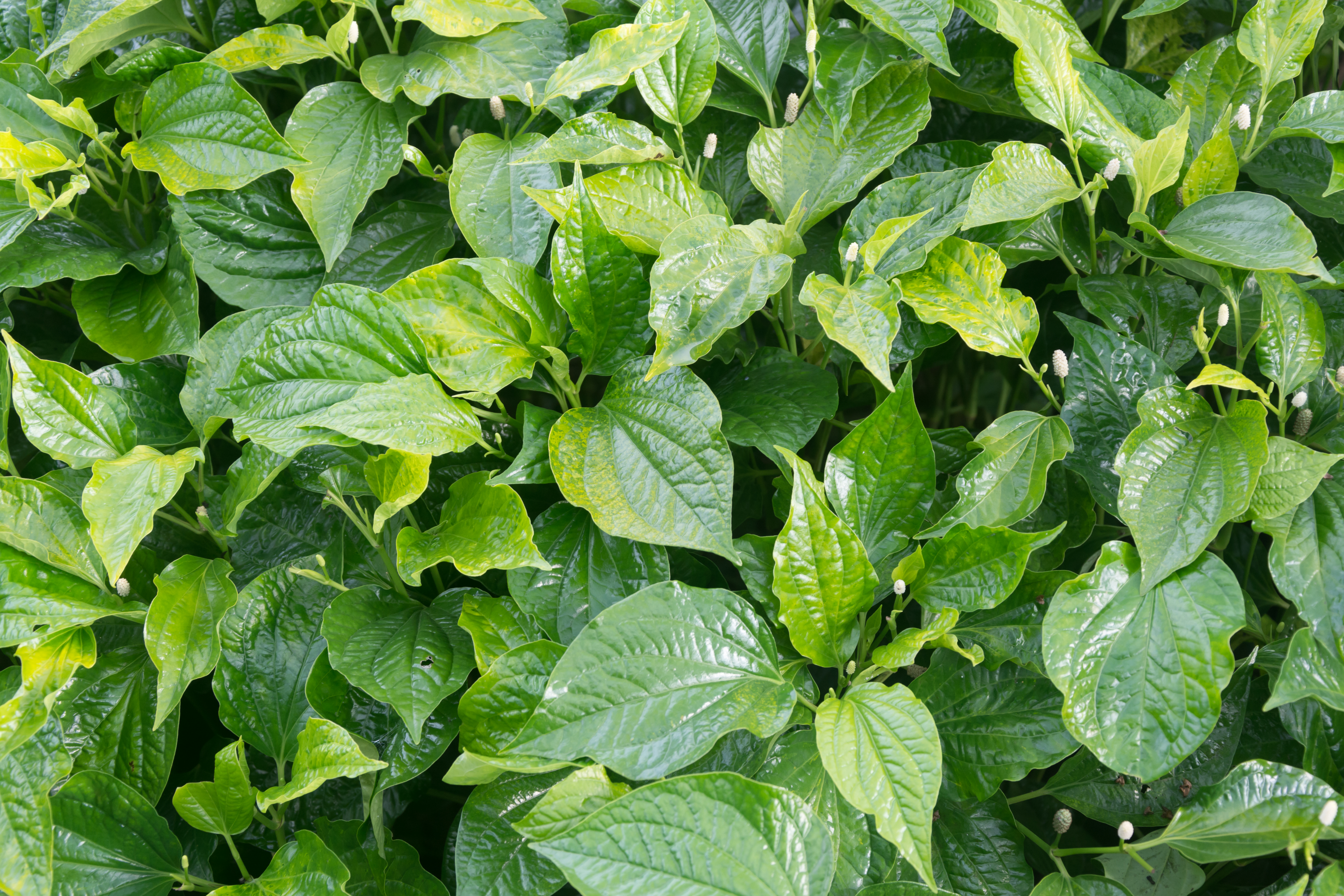Piper betle
(Piper betle)

Description
The betel (Piper betle) is a vine of the family Piperaceae, which includes pepper and kava. Betel leaf is mostly consumed in Asia, and elsewhere in the world by some Asian emigrants, as betel quid or in paan, with areca nut and/or tobacco. In India and Sri Lanka, a sheaf of betel leaves is traditionally offered as a mark of respect and auspicious beginnings in traditional Indian culture. Occasions include greeting elders at wedding ceremonies, celebrating the New Year, and offering payment to physicians and astrologers (to whom money and/or areca nut, placed on top of the sheaf of leaves, are offered in thanks for blessings). The betel plant is an evergreen, dioecious perennial, with glossy heart-shaped leaves and white catkin. The betel plant originated in Southern and Southeast Asia. The term Betel was derived from the Malayalam word vettila, via Portuguese. The betel leaf is cultivated mostly in South and Southeast Asia, from Pakistan to Papua New Guinea. It needs a compatible tree or a long pole for support. Betel requires well-drained fertile soil. Waterlogged, saline and alkali soils are unsuitable for its cultivation. In Bangladesh, farmers called barui prepare a garden called a barouj in which to grow betel. The barouj is fenced with bamboo sticks and coconut leaves. The soil is plowed into furrows of 10 to 15 m length, 75 cm in width and 75 cm depth. Oil cakes, manure, and leaves are thoroughly incorporated with the topsoil of the furrows and wood ash. The cuttings are planted at the beginning of the monsoon season. Proper shade and irrigation are essential for the successful cultivation of this crop. Betel needs constantly moist soil, but there should not be excessive moisture. Irrigation is frequent and light, and standing water should not remain for more than half an hour. Reports suggest that betel leaf by itself has beneficial effects, in part because of its anti-mutagenic effects against mutagens (tobacco and areca nut) in betel quid. While earlier studies hypothesized a potential mutagenic role for betel leaf in causing oral cancers, subsequent studies invalidated it by isolating compounds (eugenol and hydroxychavicol) in betel leaf that have anti-mutagenic roles. These compounds were also found to reduce the carcinogenic burden imposed by tobacco and areca nut. Hydroxychavicol is found to demonstrate anti-prostate cancer efficacy in an in vitro (human prostate cancer cells) and in vivo ( BALB/c nude mice) study.
Taxonomic tree:







